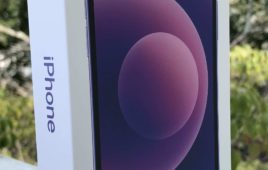AT&T, Sprint, T-Mobile, U.S. Cellular and Verizon Wireless have all committed to a new set of voluntary rules regarding customer device unlocking. As CTIA spelled out yesterday in a letter to the FCC, the five biggest U.S. operators will push for the principles to be adopted into the CTIA Consumer Code for Wireless Service.
The set of six principles for device unlocking, as submitted by CTIA:
1. Disclosure. Each carrier will post in its website its clear, concise, and readily accessible policy on postpaid and prepaid mobile wireless device unlocking.
2. Postpaid Unlocking Policy. Carriers, upon request, will unlock mobile wireless devices or provide the necessary information to unlock their devices for their customers and former customers in good standing and individual owners of eligible devices after the fulfillment of the applicable postpaid service contract, device financing plan or payment of an applicable early termination fee.
3. Prepaid Unlocking Policy. Carriers, upon request, will unlock prepaid mobile wireless devices no later than one year after the initial activation, consistent with reasonable time, payment or usage requirements.
4. Notice. Carriers that lock devices will clearly notify customers that their devices are eligible for unlocking at the time when their devices are eligible for unlocking or automatically unlock devices remotely when devices are eligible for unlocking, without additional fee. Carriers reserve the right to charge non-customers/non-former-customers a reasonable fee for unlocking requests. Notice to prepaid customers may occur at point of sale, at the time of eligibility, or through a clear and concise statement of the policy on the carrier’s website.
5. Response Time. Within two business days after receiving a request, carriers will unlock eligible mobile wireless devices or initiate a request to the OEM to unlock the eligible device, or provide an explanation of why the device does not qualify for unlocking, or why the carrier reasonably needs additional time to process the request.
6. Deployed Personnel Unlocking Policy. Carriers will unlock mobile wireless devices for deployed military personnel who are customers in good standing upon provision of deployment papers.
As stated in CTIA’s letter, the five carriers will implement three of the principles within the next three months and implement the rest within 12 months. A spokeswoman from CTIA clarified that the decision falls to the carriers which three principles will be adopted first and which can be adopted over the extended timetable.
CTIA was careful to explain that device unlocking does not equate carrier network interoperability. It also clarified that unlocking devices may enable some but not all features (i.e. voice but not data) on competitors’ networks. Under the voluntary agreement, carriers retain the right to refuse device unlocking if they suspect the claim is fraudulent or that the device is stolen.
In a statement, CCA President and CEO Steven K. Berry wrote, “Unlocking is not only significantly beneficial for consumers, but it is also important for smaller and regional carriers who may still have trouble gaining access to the most iconic, advanced devices from equipment manufacturers.”
Tom Sugrue, senior vice president of government affairs at T-Mobile US, said in a statement that “clear, fair and timely unlocking policies” are good for competition.
“There is additional progress to be made on unlocking, such as the support of a robust secondary market in mobile devices, and we will continue working with the FCC to enhance the new policies announced today,” Sugrue added.




